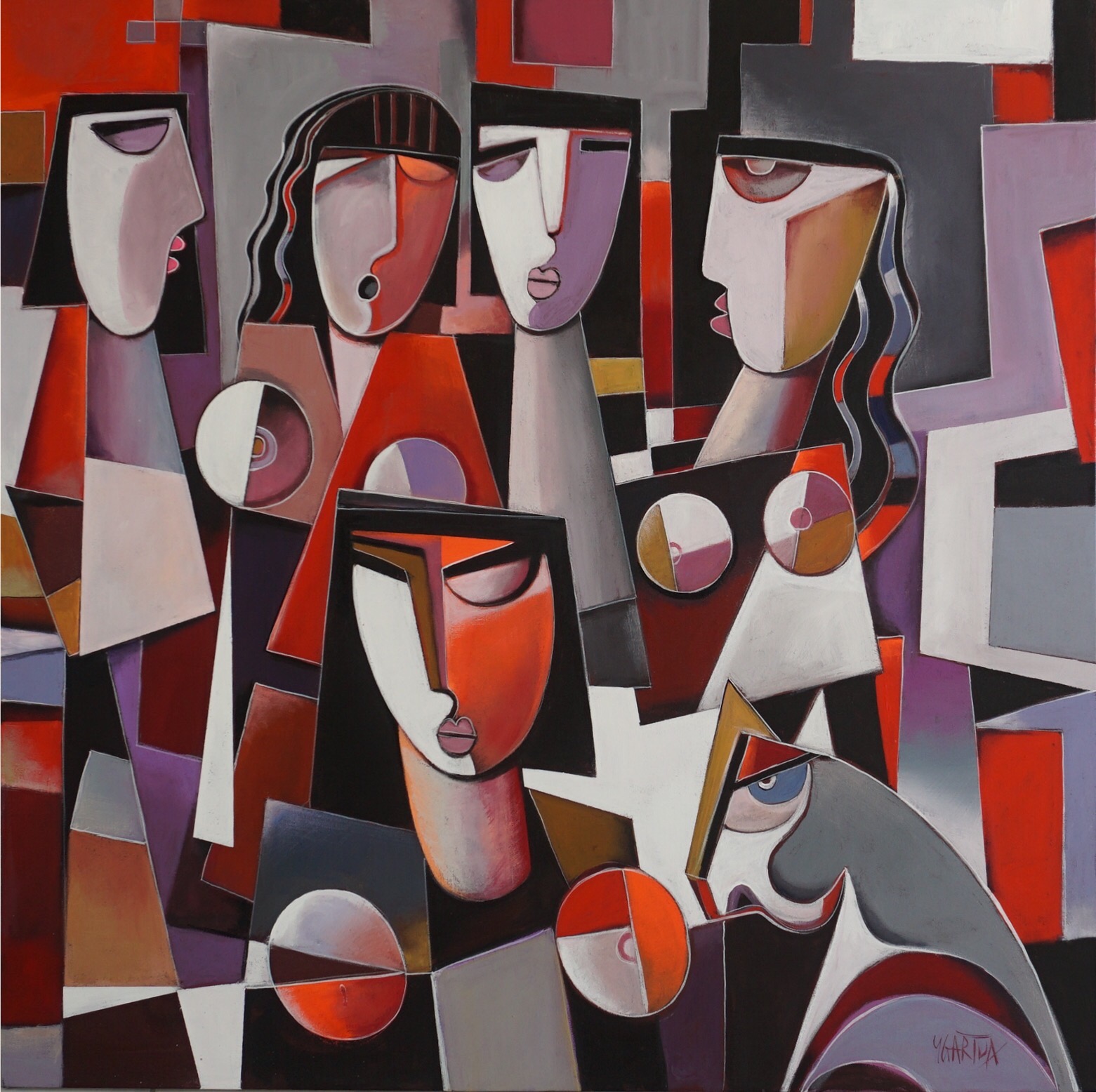
Many Cubist artists paint subjects relevant to their everyday world (natural or man-made). These new approaches to Cubism allow Cubist artist to reconstruct their subject differently through the Analytical and Synthetic cubist styles. Synthetic Cubism was developed between 19, it was composed of different textures, surfaces, collage elements and a large variety of merged subject matter this is what characterises Synthetic Cubism. Synthetic Cubism was the later phase within Cubism that looked at the experimental nature of collage. This does not apply to all Analytic Cubist paintings as some used similar tones of colour to create a more unified surface on the painting. The brushwork in some Analytic Cubist paintings emphasized the contrast between the light and darker tones. Art critics originally used the term Cubism as an insult to their simplistic designs. Analytic Cubist artist made use of the basic geometric shapes: pyramids, cubes, spheres, cylinders, and cones to represent the natural world. The fractured, geometric forms muted colours and undefined edges of their subject are what characterizes Analytic Cubist artworks.

After looking at the subject from every possible angle a Cubist artist pieces together fragments from various viewpoints simultaneously on to one painting. Colour was almost absent from these paintings except for the use of dull colours. The distinction between Synthetic Cubism and Analytic Cubism was that Analytic Cubists analyse the subjects form and re-constructs the subject with geometric shapes. Picasso’s ideas and influences lead him to approach art in a new style now known as the Cubism movement.Ĭubist paintings were not meant to be realistic or life-like in any way, instead they revolutionized conventional still life landscape and portrait paintings through their abstracted ideas and artworks.Īnalytic Cubism is one of the two phases within Cubism and was developed between 19. Picasso reconstructs the subject with different segments that allow his viewers to see all angles of his subject. In a representation the artist takes what they see and paints it on canvas. Picasso wanted to construct an image rather than represent it, like his influence Paul Cenzanne. Other major exponents of Cubism included Robert Delaunay, Francis Picabia, Jean Metzinger, Marcel Duchamp and Fernand Léger.Using colours and shapes to create a harmonious depiction. Picasso drew inspiration and unlike Cezanne he didn’t use the simplified shapes and sharp lines to add depth but to break down the subject into other geometric forms. The Synthetic phase featured works that were composed of fewer and simpler forms, in brighter colours. The initial phase attempted to show objects as the mind, not the eye, perceives them. The movement was conceived as ‘a new way of representing the world’, and assimilated outside influences, such as African art, as well as new theories on the nature of reality, such as Einstein’s Theory of Relativity.Ĭubism is often divided into two phases – the Analytic phase (1907-12), and the Synthetic phase (1913 through the 1920s). Instead they used an analytical system in which three-dimensional subjects were fragmented and redefined from several different points of view simultaneously. Led by Pablo Picasso and Georges Braque, the Cubists broke from centuries of tradition in their painting by rejecting the single viewpoint.

The Cubist art movement began in Paris around 1907.


 0 kommentar(er)
0 kommentar(er)
